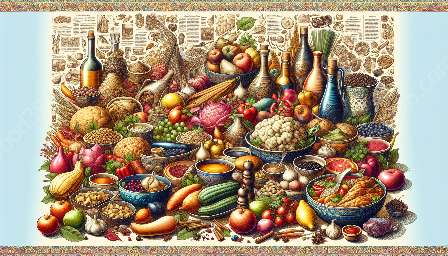Seafood cuisine is closely intertwined with the geography of coastal regions, as the availability of fresh seafood and specific environmental conditions greatly influence the local food culture. This article explores the influence of geography on food culture, particularly focusing on seafood cuisine and coastal geography. We will also delve into the origin and evolution of food culture, examining the historical, cultural, and environmental factors that have shaped the diverse seafood cuisines found in coastal regions worldwide.
The Influence of Geography on Food Culture
Geography plays a crucial role in shaping food culture, particularly in coastal areas where access to fresh seafood and marine resources heavily influences the local cuisine. The physical geography of coastal regions, including the type of coastline, marine ecosystems, and climate, directly affects the availability and types of seafood and other natural resources that are incorporated into traditional dishes.
The culinary traditions of coastal communities are often shaped by their unique geographical features, such as bays, estuaries, and inlets, which provide diverse habitats for various fish, shellfish, and seaweed. Additionally, the proximity to the sea and its influence on climate and weather patterns can impact agricultural practices, further diversifying the local food culture.
Coastal Geography and Seafood Cuisine
Coastal geography significantly influences the types of seafood and marine resources available for consumption, directly impacting the development of seafood cuisine. For example, the long, rugged coastlines of Norway provide abundant access to cold-water fish like cod, haddock, and salmon, which are central to the country's traditional dishes such as lutefisk and rakfisk. On the other hand, tropical coastal regions like Thailand boast a rich variety of shellfish, tropical fish, and seaweed, leading to the creation of flavorful dishes like Tom Yum Kung and Pad Thai.
In addition to the diversity of seafood, the coastal geography also contributes to the development of unique cooking techniques and flavor profiles. For instance, the use of smoking and curing methods in Scandinavian countries reflects the historical need to preserve fish for long winters, while the Southeast Asian practice of using aromatic herbs and spices reflects the abundant plant life and tropical climate.
Origin and Evolution of Food Culture
The origin and evolution of food culture are deeply intertwined with historical, cultural, and environmental factors, providing insight into the development of seafood cuisine in coastal regions. Historical trade routes, colonization, and migration have played pivotal roles in the exchange of culinary practices and ingredients, leading to the fusion of diverse food traditions and the evolution of regional cuisines.
Coastal areas have been hubs for cultural exchange, where the blending of indigenous culinary traditions with those brought by traders and settlers has resulted in the creation of unique seafood dishes. Furthermore, environmental changes and ecological shifts, such as overfishing and pollution, have compelled coastal communities to adapt their food culture and culinary practices to ensure sustainability and conservation of marine resources.
Exploring Coastal Regions and Seafood Cuisines
Throughout history, coastal regions have developed distinct seafood cuisines that reflect the local geography and cultural heritage. By delving into the seafood cuisines of different coastal regions, one can gain a deeper understanding of how the local geography has influenced food culture and contributed to the rich tapestry of global gastronomy. From the Mediterranean coast, known for its flavorful grilled fish and seafood paella, to the coastal areas of Japan with their emphasis on fresh sashimi and sushi, each region offers a unique gastronomic experience influenced by its coastal geography.
As we continue to explore the evolution of food culture and the influence of geography on seafood cuisine, it becomes evident that coastal regions are treasure troves of culinary diversity, where the natural bounty of the sea is celebrated and transformed into a wide array of delectable dishes. Understanding the intricate relationship between coastal geography and seafood cuisine allows us to appreciate the rich history, biodiversity, and cultural significance of these unique culinary traditions.


